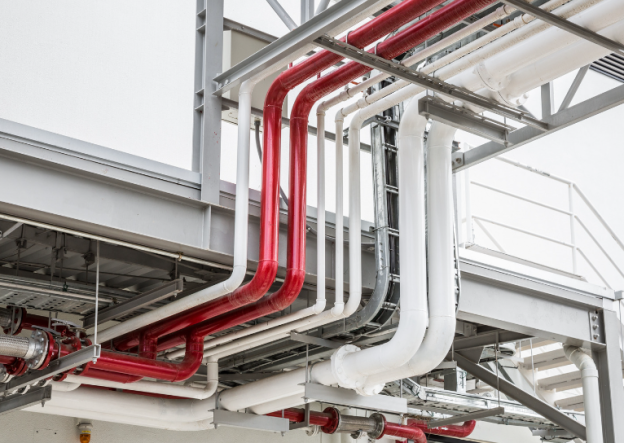The world of office spaces continues to evolve, and alongside it grows the imperative for stellar plumbing practices. Everyone knows a well-done job on the plumbing front ensures comfort for not only employees, but also clients who walk through your doors daily.
But it goes beyond comfort. With sound plumbing comes effective cost management and environmental preservation. It’s about making an overall competitive difference in your office setup. Now, dive deep into this critical topic.
Importance of Optimal Plumbing
Prime among factors that should be prioritized in an office environment is optimal plumbing. This might seem like a minor detail, but you must comprehend its impact. A functional plumbing system is critical for maintaining sanitary workspaces, which ultimately nurtures a healthy environment where productivity can thrive.
Subpar plumbing systems can lead to incessant breakdowns and blockages. You don’t need to magnify the inconvenience and disruptions these can cause in an office setting – it’s best avoided.
Common Office Plumbing Issues
By recognizing the common office plumbing issues, you’ll be one step ahead when they occur. Usually, these hitches range from slow drains, pipe leaks, clogged toilets to low water pressure. Some root from inadequate maintenance or poor initial installations, while others are due to inevitable wear and tear.
If left unattended, any of these issues can escalate into major problems that can disrupt business operations and even result in significant repair costs.
Quality Plumbing Material Selection
Investing in high-grade plumbing materials resistant to corrosion, pressure fluctuations and sustained heavy usage pays off via multi-decade reliability, minimizing failures and replacement costs. Premium quality pipes handle thermal expansions and building settings better, avoiding cracks over time.
Components made specifically per public plumbing code regulations also assure legal compliance. Maintenance teams must document each material’s make, dimensions and acquisition date for easier repairs or future upgrades. Consult professional plumbers to match component quality with office type, locale and usage levels.
Trustpilot Reviews of Professional Plumbers
Reviews are a great way to find good plumbers. As an example, with over 15,000 independent reviews averaging 4.5 stars on Trustpilot, Fergusons Plumbing clients validate the agency’s reliability for prompt, high quality service even for complex jobs alongside 24/7 availability for emergency callouts.
Users specifically recommend Fergusons for long-term cost savings through durable solutions resistant to repetitions of common issues. They are thereby endorsed for optimizing office plumbing infrastructure. Trustpilot reviews of Fergusons Plumbing display their stellar reputation which gives confidence to facility managers exploring service partners..
Maintaining High Hygiene Standards
Daily plumbing use, from faucets to toilets, make them hotspots for germ accumulations without proper cleaning. Bacteria then spread through incidental hand and surface contacts, transmitting illnesses among staff.
Facility managers must therefore schedule exhaustive plumbing system sanitization procedures after daily work hours using EPA-approved disinfecting agents. Educating everyone on hygienic sink, urinal and toilet usage also proactively optimizes cleanliness. Prominently displayed visual guides further reinforce best practices.
Eco-Friendly Plumbing Replacements
With growing focus on environmental responsibility, building sustainability certifications like LEED now consider eco-friendly plumbing replacements in their rating criteria, making them attractive beyond ecological benefits alone.
Low-flow faucets, automatic toilets and urinals conserve water otherwise lost through outdated models. Tankless water heaters boost energy efficiency. Perform a plumbing carbon footprint analysis to identify the most impactful green replacements for scoring positive ratings.
Sustainable Water Usage Methods
Sustainable water usage methods can make a notable difference in the amount of water consumed daily in the office environment. For instance, low-flow toilets and urinals can cut down on gallons of water used without compromising their utility.
Smart faucets and leak detection monitors can also reduce water waste. Ideally, incorporating such features into your office’s bathrooms demonstrates not only care for the environment but also an understanding of long term cost efficiency.
Improving Office and Bathroom Accessibility
An office space accommodates more than just employees—it welcomes clients, vendors, family members, and other visitors, including those with physical disabilities. As such, plumbing systems must be designed for accessibility to make restrooms usable for all. Installing support bars, accessible sinks, and automated flush systems marks significant progress in the right direction.
Remember, a disability-friendly environment demonstrates more than legal compliance. It reflects an organization’s humanity and inclusive values to make everyone feel welcome. Creating accessible office facilities removes barriers for the disabled while letting them maintain independence and dignity.
It empowers them with the comfort to visit without being reliant on others. Ultimately, thoughtful accommodation makes for good corporate citizenship.
Professional Maintenance Schedules
Documented plumbing inspection schedules assess functionality deterioration before outright failures occur. Annual drain pipe checks using cable machines capture blockages while pipe insulation examinations identify weathering.
Fixture upgrades or pipe realignments are then planned conveniently rather than crisis responses to sudden flooding incidents. However, documenting all schedules, procedures, serial numbers and compliance checks enables continuous auditing, accountability and improvement.
Educating Staff on Proper Use
The smoothest office plumbing operation relies on proper usage habits from staff. Facility managers must therefore inform all employees on appropriate techniques and precautions through training workshops. These underscore the damage potential of flushing unsuitable items or pouring damaging substances down sinks while demonstrating correct application procedures.
Upkeep teams additionally give step-by-step guidance on appropriate plumbing-related incident response. This proactive approach protects invaluable infrastructure while creating a team mindset valuing efficient and functional work environments.
Emergency Contingency Planning
Despite rigorous maintenance, plumbing emergencies can always arise unpredictably. Facility managers must therefore outline contingency protocols guiding crisis response.
These entail maintaining a list of after-hours plumber contacts, mapping locations for water shut-off valves, specifying procedures for cordoning water-damaged areas, and documenting sequences for insurance claims. Training staff on these protocols allows quicker mitigation when incidents do strike.
Plumbing System Layout Recommendations
Incorporate plumbing layout considerations right from initial office space planning itself to enable the most efficient systems avoiding unnecessary future costs. Expert plumbers from this site guide architectural pipe alignments preventing wasted spaces necessitating awkward rerouting later.
Ensuring optimal pipe diameter specifications also precludes sizing mismatches. Likewise, mapping adequate access provisions from the outset speeds up inevitable future plumbing jobs.
Avoiding Costly Plumbing Mistakes
Attempting plumbing jobs beyond one’s professional expertise often worsens issues while complicating future contractor work. Additionally, even reputable suppliers may provide defective parts failing prematurely – proper vetting and warranty safeguards avoid this expense.
Overlooking minor leaks till ceilings stain or walls crumble also snowballs restoration requirements later. Instead address problems proactively based on daily system checks even when issues seem minor.
EMINT and LEED Guidelines Compliance
Compliance with EMINT (Excellence in Management & Innovative Technologies) and LEED (Leadership in Energy and Environmental Design) guidelines further ensures efficient, eco-friendly plumbing solutions. It demonstrates your commitment to standardized management of resources including energy devices, water use efficiency fixtures, among others.
Adherence too attests your responsibility towards maintaining sustainable buildings contributing less to greenhouse gas emissions – an incredibly potent corporate social responsibility gesture.
In a Nutshell
Excellent plumbing practices aren’t just about keeping an office running smoothly but foster an environment where staff can thrive, costs are well-managed, and your corporate image is at its best.
By keenly observing the practices discussed above, you transform your workspace from just another office building to an ecological haven. So take charge today and initiate a productive, sustainable, and healthy future for all.


